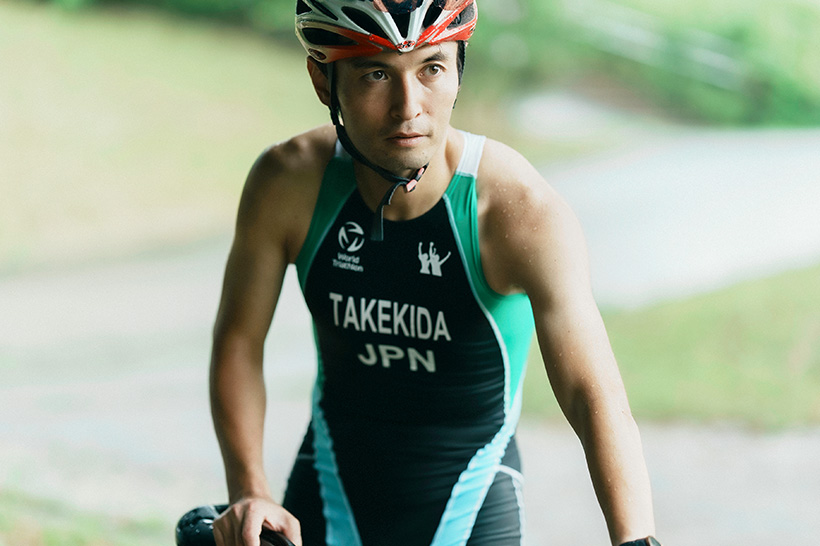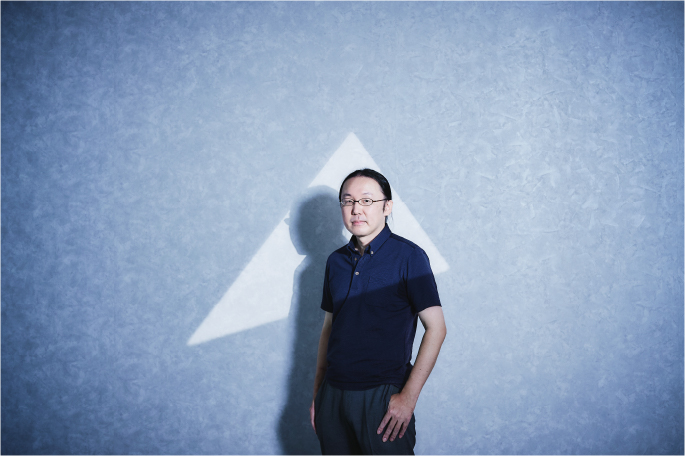
Safeguarding life’s most precious memories
- My Future Memories -
Institute of Memory Technology
Research and Development
Tatsuo Shiozawa
KIOXIA has established “Uplifting the world with ‘memory’” as its mission. How do the employees of KIOXIA regard memory? Though a series of interviews, we will look at “My Future Memories,” which each employee will pursue going forward. In this edition, we spoke with Tatsuo Shiozawa, who is involved in the development of next-generation memory at the Institute of Memory Technology Research and Development. We asked Shiozawa about a story involving his family that made a strong impression on him, as well as about memories he hopes to preserve, and his goal to resolve electric power problems through his work.

The Importance of “Connecting with People” Realized Through the Development of New Products
Shiozawa joined Toshiba in 2000 and was assigned to the company’s Works Lab, the business division dealing with research and development (R&D). Until being transferred to Toshiba Memory in 2017, he remained involved in the development of LSI (large-scale integration) for wireless LAN.
Work he has done during his career of nearly two decades which left a particularly strong impression on him was the project he undertook with colleagues to launch “FlashAir™,” a wireless LAN internal SD card, beginning in around 2010. FlashAir™, which was born through new product development activities, enables file transmission and reception between devices with FlashAir™ installed, or access to FlashAir™ installed in personal computers and smartphones through external wireless LAN devices using an SDHC/SDXC memory card with wireless LAN functionality on board, where the card itself serves as a wireless LAN access point. FlashAir™ was an extremely popular product for Toshiba.
“It began with me and a few others as a new business project,” recalls Shiozawa, “and the group grew in size. As I had been working within the R&D domain for the entire ten years since I joined the company, it was a new experience for me personally to work on new product development, and I remember approaching it with tremendous resolution. Initially I was in charge of everything from product development to marketing, and it was also a project that taught me about the importance of connecting with people.”

If it Can be Preserved in Memory: Revealing Two Memories
We are in an era where records continue to increase. Today, when just about anyone can use social media on a daily basis, preserving memories on the cloud has become a simple fact of life. For Shiozawa, however, who was born in 1973, being able to “preserve personal records through social media and release them to the public” was a very surprising change. He also thinks on occasion, “If only I had recorded what happened back then…”
A memory that left a particularly strong impression on Shiozawa was during a family trip to Shizuoka Prefecture when he was very young. The memory of him somehow having fallen into the lake remains vivid today as a visual memory.
“I’m not entirely sure if it was Lake Hamana or a sea nearby, but I vividly remember being underwater and seeing the water’s surface get farther away as I sank,” remembers Shiozawa. “I felt the fear a child would feel, and thought, ‘Is this it? Am I going to die?’ But even more vivid in my memory banks than that fear is the beauty of the shimmering water’s surface. What I can’t figure out is, even though this was a shocking event for me, that neither of my parents have the memory of me having fallen into the water. It actually happened, because my younger brother remembers it as well, but for some reason my parents don’t.”
Another memory that is deeply ingrained in him is the flavor of a salad made by his grandmother, with whom he was living at the time. It was made with cucumbers, seaweed, and seasoning and she tossed it with her hands. “During my rebellious phase, there were times when I hated it, as these were ingredients that were in our cupboard every day,” admits Shiozawa.
“It was a unique flavor that I struggle to describe in words. But I remember that flavor clearly. Once my grandmother reached her 80s and was no longer cooking, I had fewer opportunities to have that dish. What I don’t get is, when I would sometimes talk to my grandmother about that salad, she didn’t even remember having made it. She remembered just about everything else, and was still healthy at the time, but for some reason there was no memory of the salad. Not only was everyone at our family home surprised; I remember it also left us with a rather empty feeling.”

If we Record it, Our Lives will Become Richer
The memory of the lake is very vivid to him, but his parents don’t remember. And while his family remembers their grandmother’s salad, she can’t recall, despite having been the one who made it. “People’s memories are extremely vague. That’s why I want to preserve them as records,” says Shiozawa, motivated at least in part by those two stories.
“Today, it’s easy to preserve memories as photos, text, and recipes using social media. This enables us to recall them later. But if we were able to preserve all of the information contained in feelings we have experienced through the five senses – such as the shimmering water’s surface that only I remember, and the flavor of my grandmother’s salad that I cannot sufficiently describe in words, I’m convinced that our lives would be richer for it.”
He added that “I wish I could have preserved the emotion from when we were working to launch FlashAir™ 10 years ago.”
“I sometimes go back and look through e-mails from that time, but it’s impossible to really capture the emotion from the text. If that had been preserved, and if we were able to extract it, we could probably apply it to work we are presently involved in, and it’s possible that it would prove helpful in cultivating the next generation of employees.”
As Shiozawa posited, let’s say we were able to record in data form feelings we had through our five senses or emotions, including things that we took for granted at the time. This would make possible communication between us and others or between ourselves today and ourselves back then, and serve as a bridge. It would then gain value as a new “memory”, and society might be richer for it.
“It’s not just the fun memories that pop to mind when old memories are revealed. But I particularly want to be able to preserve memories of enjoyment or optimism as records. Through my work in memory R&D for the next and future generations, I hope to uplift the world through ‘memory’”.
Shiozawa’s work today comprises studying the application of next- and future-generation memory to actual systems, forecasting future memory systems, and providing feedback for development. So, what exactly is it that he hopes to achieve?
“I see the electric power problem regarding data centers, which install and operate servers and other equipment, as a social issue. And through our technology, I hope to eradicate this problem. In line with the explosive growth in the volume of information flowing in the world today, the electric power consumed by data centers is already growing dramatically. And if the number of IoT devices increases, some say it will exceed our current total power generation.”
“The focus of next-generation memory we are currently doing R&D on is increasing efficiency through collaboration between memory, the chip, and the CPU. In the end, we believe it will contribute to greatly reducing data center power consumption. Looking at global trends today, a continued increase in information volume is inevitable. As we move toward an era in which people’s memories will increase, going forward I hope to continue developing memory for the next generation.”
Institute of Memory Technology
Research and Development
Tatsuo Shiozawa
Shiozawa joined Toshiba in 2000, and was assigned to the System LSI Development Center. In 2008, he was designated project leader for wireless LAN LSI development. He launched the “FlashAir™” wireless LAN internal SD card two years later, and beginning in 2013 he developed the specifications for the “Mamolica™” NFC internal SD card. Shiozawa was transferred to Toshiba Memory (now KIOXIA) in 2017, and is currently in charge of next-generation memory system development at the Institute of Memory Technology Research and Development.
The content and profile are current as of the time of the interview (October 2019).



